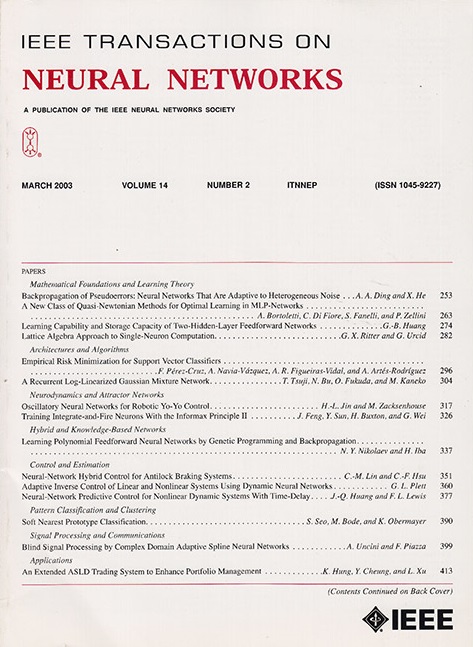资源受限终端设备的自适应联邦持续学习
IF 8.9
1区 计算机科学
Q1 COMPUTER SCIENCE, ARTIFICIAL INTELLIGENCE
IEEE transactions on neural networks and learning systems
Pub Date : 2025-03-16
DOI:10.1109/TNNLS.2025.3565827
引用次数: 0
摘要
终端设备的激增导致了分布式计算范式,其中设备上的机器学习模型不断处理这些设备生成的各种数据。这些数据的动态特性,以持续变化或数据漂移为特征,对设备上的模型提出了重大挑战。为了解决这个问题,提出了持续学习(CL),使机器学习模型能够增量地更新其知识并减轻灾难性遗忘。然而,由于隐私和数据量问题,传统的集中式CL方法不适合终端设备。在这种情况下,联邦CL (FCL)成为一种很有前途的解决方案,它在本地保存用户数据,同时通过协作更新增强模型。针对FCL存储资源有限、任务移位检测自主性差以及在FCL场景下难以应对新的对抗性任务等问题,提出了一种新的FCL框架——自适应联邦CL (SacFL)。$\rm {SacFL}$采用编码器-解码器架构来分离任务健壮和任务敏感组件,通过为资源受限的终端设备保留轻量级任务敏感组件来显着降低存储需求。此外,$\rm {SacFL}$利用对比学习引入自主数据移位检测机制,使其能够辨别新任务是否出现以及是否是良性任务。该功能最终允许设备在没有额外信息的情况下自主触发CL或攻击防御策略,这对于终端设备来说更实用。在Cifar100和THUCNews等多个文本和图像数据集上进行的综合实验验证了$\rm {SacFL}$在类别增量和领域增量场景下的有效性。此外,还开发了一个演示系统来验证其实用性。本文章由计算机程序翻译,如有差异,请以英文原文为准。
SacFL: Self-Adaptive Federated Continual Learning for Resource-Constrained End Devices
The proliferation of end devices has led to a distributed computing paradigm, wherein on-device machine learning models continuously process diverse data generated by these devices. The dynamic nature of this data, characterized by continuous changes or data drift, poses significant challenges for on-device models. To address this issue, continual learning (CL) is proposed, enabling machine learning models to incrementally update their knowledge and mitigate catastrophic forgetting. However, the traditional centralized approach to CL is unsuitable for end devices due to privacy and data volume concerns. In this context, federated CL (FCL) emerges as a promising solution, preserving user data locally while enhancing models through collaborative updates. Aiming at the challenges of limited storage resources for CL, poor autonomy in task shift detection, and difficulty in coping with new adversarial tasks in the FCL scenario, we propose a novel FCL framework named self-adaptive federated CL (SacFL). $\rm {SacFL}$ employs an encoder–decoder architecture to separate task-robust and task-sensitive components, significantly reducing storage demands by retaining lightweight task-sensitive components for resource-constrained end devices. Moreover, $\rm {SacFL}$ leverages contrastive learning to introduce an autonomous data shift detection mechanism, enabling it to discern whether a new task has emerged and whether it is a benign task. This capability ultimately allows the device to autonomously trigger CL or attack defense strategy without additional information, which is more practical for end devices. Comprehensive experiments conducted on multiple text and image datasets, such as Cifar100 and THUCNews, have validated the effectiveness of $\rm {SacFL}$ in both class-incremental and domain-incremental scenarios. Furthermore, a demo system has been developed to verify its practicality.
求助全文
通过发布文献求助,成功后即可免费获取论文全文。
去求助
来源期刊

IEEE transactions on neural networks and learning systems
COMPUTER SCIENCE, ARTIFICIAL INTELLIGENCE-COMPUTER SCIENCE, HARDWARE & ARCHITECTURE
CiteScore
23.80
自引率
9.60%
发文量
2102
审稿时长
3-8 weeks
期刊介绍:
The focus of IEEE Transactions on Neural Networks and Learning Systems is to present scholarly articles discussing the theory, design, and applications of neural networks as well as other learning systems. The journal primarily highlights technical and scientific research in this domain.
 求助内容:
求助内容: 应助结果提醒方式:
应助结果提醒方式:


